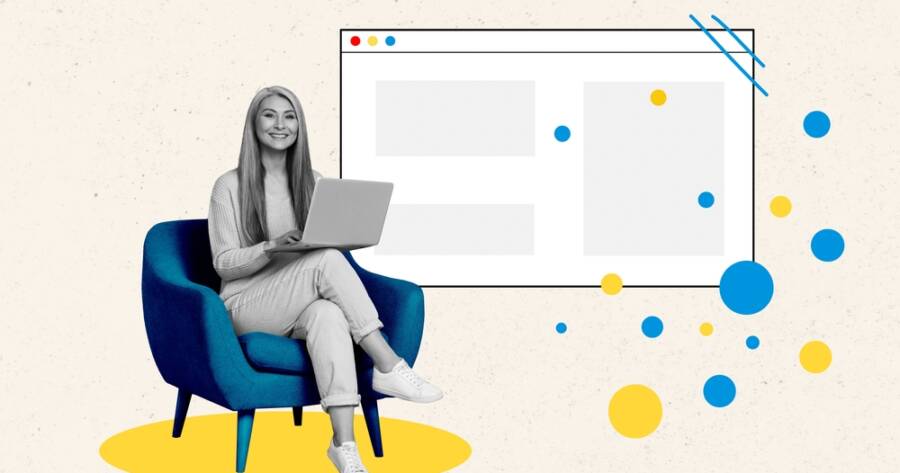Building a website has never been easier, thanks to the wide range of web design software available today. Whether you’re a beginner looking for a no-code solution or an experienced designer seeking advanced customization, the right tool can make all the difference. With features like AI-powered design, intuitive drag-and-drop builders, and seamless integrations, modern web design software is more powerful than ever.
Wix: The Best Choice for Beginners
Wix continues to dominate the web design space, offering an intuitive platform that caters to beginners and small business owners. With its drag-and-drop interface, users can create professional-looking websites without any coding knowledge.
One of Wix’s standout features is its AI-powered Wix ADI (Artificial Design Intelligence), which can generate a fully designed website based on user preferences. The platform also includes a vast library of templates, built-in SEO tools, and eCommerce capabilities for those looking to set up an online store. While it may not offer the deep customization that developers need, Wix remains a top choice for those who want an easy and efficient way to build a website.
WordPress: The Go-To Platform for Flexibility
WordPress remains one of the most powerful and widely used web design tools, supporting over 43% of all websites on the internet. Whether you’re creating a personal blog, an online store, or a corporate site, WordPress offers unparalleled flexibility.
The platform’s vast library of themes and plugins allows users to customize their websites extensively. With the introduction of AI-assisted design tools, WordPress now offers intelligent suggestions for layouts, color schemes, and content organization. While it requires some learning, particularly for those unfamiliar with content management systems, the combination of customization, scalability, and SEO-friendly features makes WordPress a top choice for professionals and businesses.
Webflow: A Balance of Design and Development
Webflow continues to bridge the gap between designers and developers by offering a visual interface with advanced customization options. Unlike traditional drag-and-drop builders, Webflow generates clean, production-ready code, making it an excellent choice for web designers who want control over HTML, CSS, and JavaScript without manually coding every element.
The platform also integrates AI-powered design recommendations, animations, and CMS capabilities for dynamic content. Webflow’s learning curve is steeper than some other tools, but for those seeking a balance of creative freedom and functionality, it provides a powerful solution. It’s particularly popular among freelancers, agencies, and startups that want visually stunning websites with advanced interactivity.
Figma: The Ultimate Tool for Collaboration
Figma remains the top choice for UI/UX designers, offering a cloud-based design platform that enables real-time collaboration. Teams can work on projects simultaneously, making it ideal for companies with distributed design teams.
With its intuitive interface, Figma allows designers to create wireframes, prototypes, and high-fidelity designs with ease. The addition of AI-assisted design tools has further enhanced its capabilities, helping designers generate design elements, layouts, and even responsive variations based on user input. While Figma isn’t a full-fledged web builder, its seamless integrations with platforms like Webflow and WordPress make it an essential part of the modern web design workflow.
Shopify: The Best for eCommerce
For those focused on eCommerce, Shopify remains the leading choice. The platform offers a comprehensive suite of tools to help businesses build and manage online stores with ease. From customizable themes and AI-driven product recommendations to integrated payment gateways and inventory management, Shopify simplifies the process of selling online.
Recent updates have introduced more AI-powered automation, allowing businesses to optimize their storefronts for conversions without extensive manual input. While Shopify’s design flexibility is somewhat limited compared to platforms like WordPress, its specialized focus on eCommerce makes it an unbeatable choice for online retailers.
Squarespace: The Best for Aesthetics
Squarespace continues to be the preferred option for creatives, artists, and businesses that prioritize aesthetics. Known for its sleek, professionally designed templates, the platform allows users to create visually stunning websites with minimal effort.
With improvements in AI-assisted design and content suggestions, Squarespace makes it easier than ever to create polished sites that align with branding and marketing goals. It also offers built-in SEO tools, blogging capabilities, and eCommerce features, making it a well-rounded choice for entrepreneurs and content creators. However, those looking for more extensive customization may find Squarespace slightly restrictive compared to other platforms like Webflow or WordPress.
Finding the Right Web Design Tool for Your Needs
Choosing the best web design software depends on your experience level, goals, and the type of website you want to create. Beginners may prefer Wix for its simplicity, while businesses seeking scalability might opt for WordPress or Shopify. Designers who want creative control and coding flexibility will find Webflow and Figma invaluable. As web design continues to evolve, AI-driven enhancements are making these platforms even more powerful, ensuring that users can build stunning, functional websites with greater efficiency than ever before.

